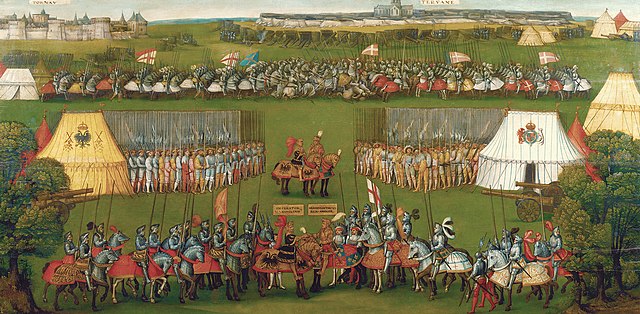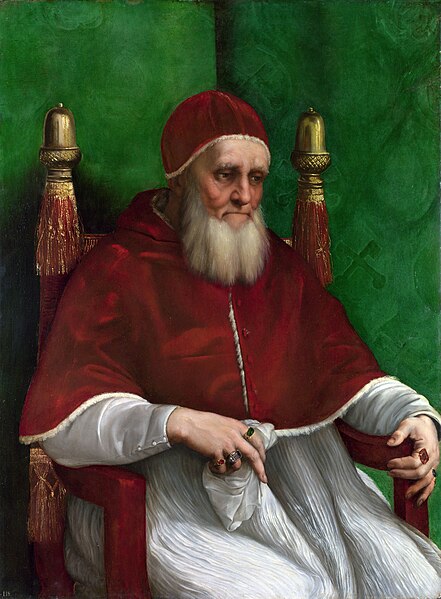The Battle of the Spurs or (Second) Battle of Guinegate took place on 16 August 1513. It formed a part of the War of the League of Cambrai, during the Italian Wars. Henry VIII and Maximilian I were besieging the town of Thérouanne in Artois. Henry's camp was at Guinegate, now called Enguinegatte. A large body of French heavy cavalry under Jacques de La Palice was covering an attempt by light cavalry to bring supplies to the besieged garrison. English and Imperial troops surprised and routed this force. The battle was characterised by the precipitate flight and extensive pursuit of the French. During the pursuit, a number of notable French leaders and knights were captured. After the fall of Thérouanne, Henry VIII besieged and took Tournai.
Triumphzug Kaiser Maximilians, Georg Lemberger
The meeting of Henry VIII and Maximilian (fore and middle ground). The Battle of the Spurs and the besieged town of Thérouanne (background). Flemish School 16th century.
View from a hill at Bomy, illustrating the terrain of the battle
An early armour of Henry VIII with a contemporary horse armour. This is indicative of the appearance of English men-at-arms at the battle. Royal Armouries.
War of the League of Cambrai
The War of the League of Cambrai, sometimes known as the War of the Holy League and several other names, was fought from February 1508 to December 1516 as part of the Italian Wars of 1494–1559. The main participants of the war, who fought for its entire duration, were France, the Papal States, and the Republic of Venice; they were joined at various times by nearly every significant power in Western Europe, including Spain, the Holy Roman Empire, England, the Duchy of Milan, the Republic of Florence, the Duchy of Ferrara, and the Swiss.
Pope Julius II, painted by Raphael (oil on wood, c. 1511). Julius attempted to secure Papal authority in Italy by creating the League of Cambrai, an alliance aimed at curbing Venetian power.
Alfonso I d'Este, Duke of Ferrara; excommunicated by Julius, he inflicted a number of defeats on the Papal forces
Pope Julius II on the walls of the conquered city of Mirandola (oil on canvas by Raffaello Tancredi, 1890, City Hall of Mirandola)
The death of Gaston de Foix during the Battle of Ravenna heralded a long period of defeats for France.








